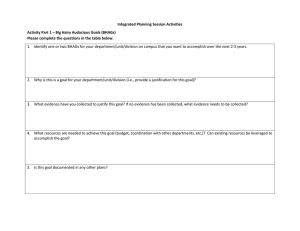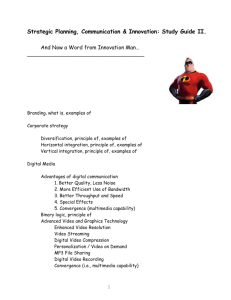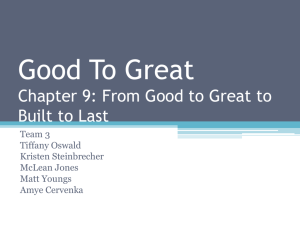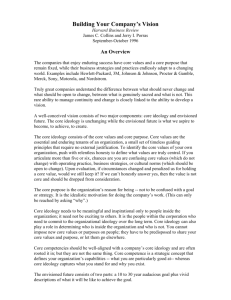Core Values Are a Company's Essential Tenets Core Purpose Is a
advertisement
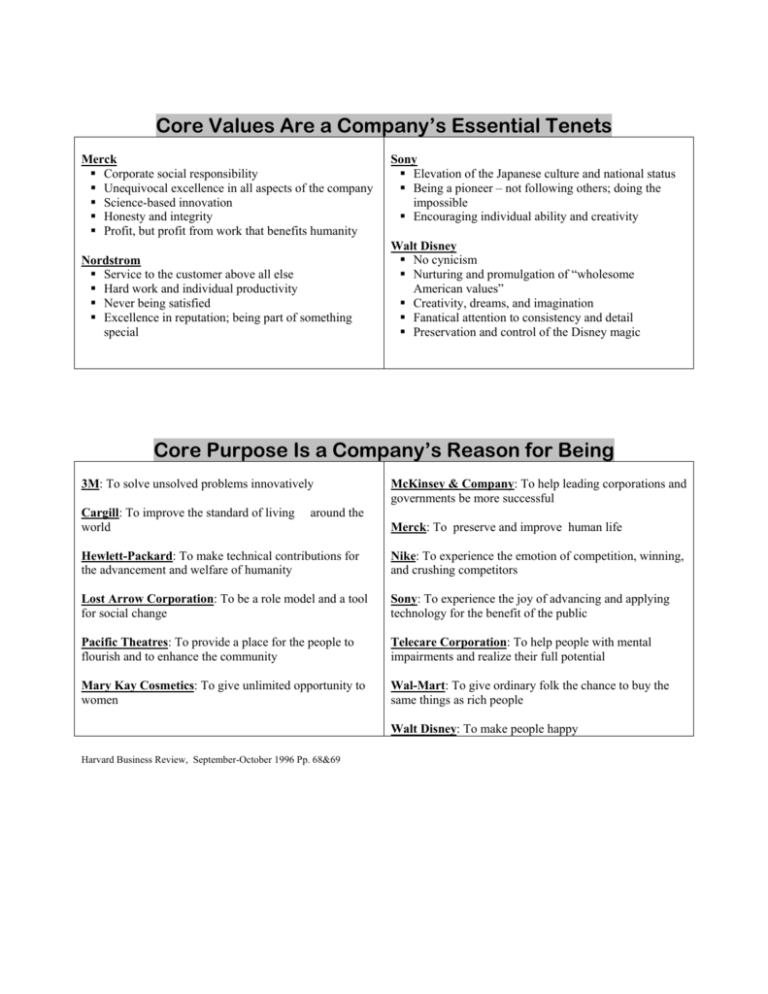
Core Values Are a Company’s Essential Tenets Merck Corporate social responsibility Unequivocal excellence in all aspects of the company Science-based innovation Honesty and integrity Profit, but profit from work that benefits humanity Nordstrom Service to the customer above all else Hard work and individual productivity Never being satisfied Excellence in reputation; being part of something special Sony Elevation of the Japanese culture and national status Being a pioneer – not following others; doing the impossible Encouraging individual ability and creativity Walt Disney No cynicism Nurturing and promulgation of “wholesome American values” Creativity, dreams, and imagination Fanatical attention to consistency and detail Preservation and control of the Disney magic Core Purpose Is a Company’s Reason for Being 3M: To solve unsolved problems innovatively Cargill: To improve the standard of living world McKinsey & Company: To help leading corporations and governments be more successful around the Merck: To preserve and improve human life Hewlett-Packard: To make technical contributions for the advancement and welfare of humanity Nike: To experience the emotion of competition, winning, and crushing competitors Lost Arrow Corporation: To be a role model and a tool for social change Sony: To experience the joy of advancing and applying technology for the benefit of the public Pacific Theatres: To provide a place for the people to flourish and to enhance the community Telecare Corporation: To help people with mental impairments and realize their full potential Mary Kay Cosmetics: To give unlimited opportunity to women Wal-Mart: To give ordinary folk the chance to buy the same things as rich people Walt Disney: To make people happy Harvard Business Review, September-October 1996 Pp. 68&69 Big, Hairy, Audacious Goals Aid Long-Term Vision Target BHAGs can be quantitative or qualitative Become a $125 billion company by the year 2000 (Wal-Mart, 1990) Democratize the automobile (Ford Motor Company, early 1900s) Become the company most known for changing the world wide poor-quality image of Japanese products (Sony, early 1950s) Become the dominant player in commercial aircraft and bring the world into the jet age (Boeing, 1950) Common-enemy BHAGs involve David-versus-Goliath thinking Crush Adidas (Nike, 1960s) Yamaha wo Tsubusu! We will destroy Yamaha! (Honda, 1970s) Harvard Business Review, September-October 1996 Pg 72 Role-model BHAGs suit up-and-coming organizations Become the Nike of the cycling industry (Giro Sport Design, 1986) Become as respected in 20 years as Hewlett-Packard is today (Watkins-Johnson, 1996) Become the Harvard of the West (Stanford University, 1940s) Internal-transformation BHAGs suit large, established organizations Become number one or number two in every market we serve and revolutionize this company to have the strengths of a big company combined with the leanness and agility of a small company (General Electric Company, 1980s) Transform this division from a defense contractor into the best diversified high-technology company in the world (Rockwell, 1995) Transform this division from a poorly respected internal products supplier to one of the most respected, exciting, and sough-after divisions in the company (Components Support Division of a computer products company, 1989)
